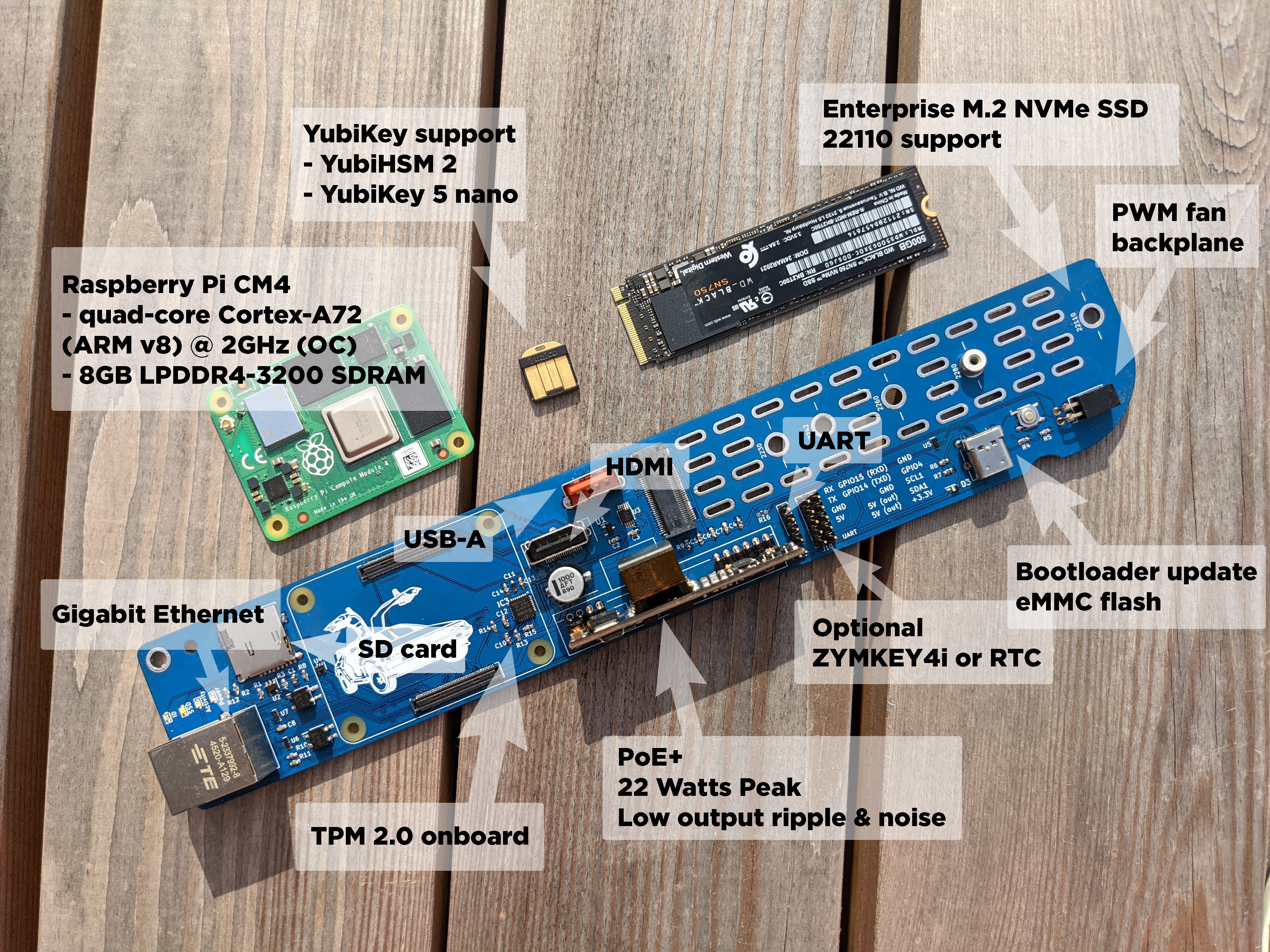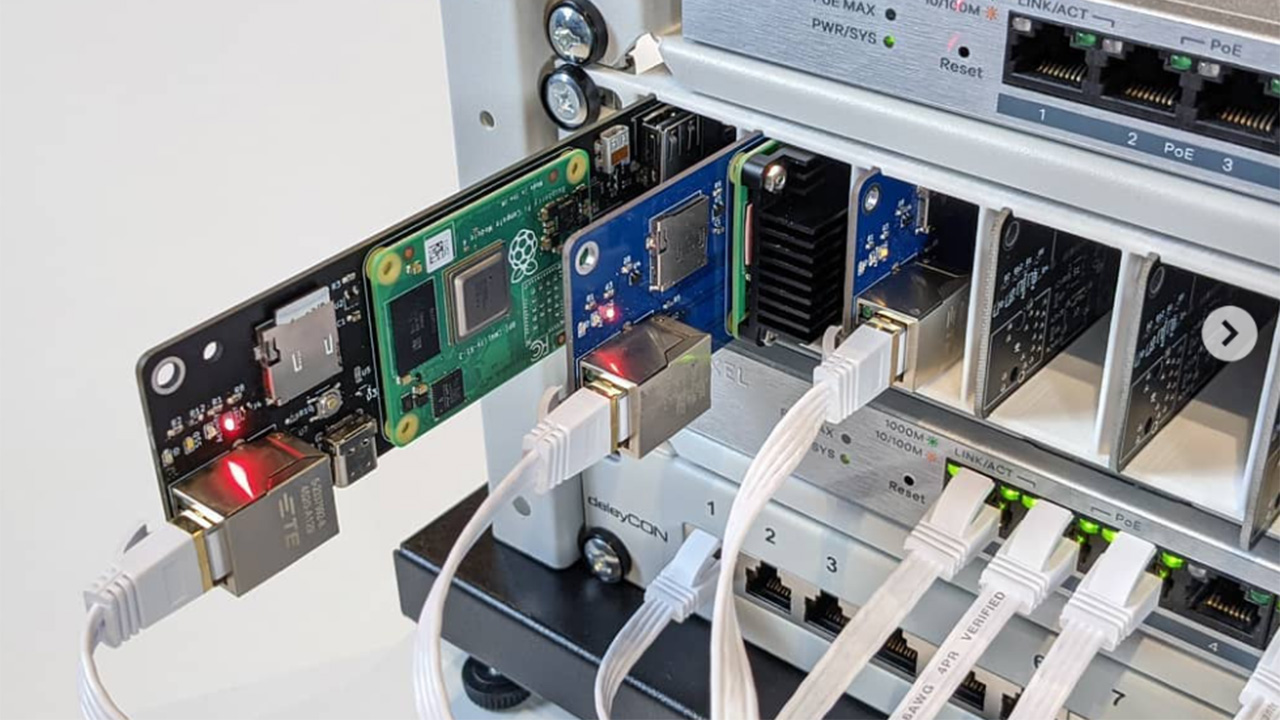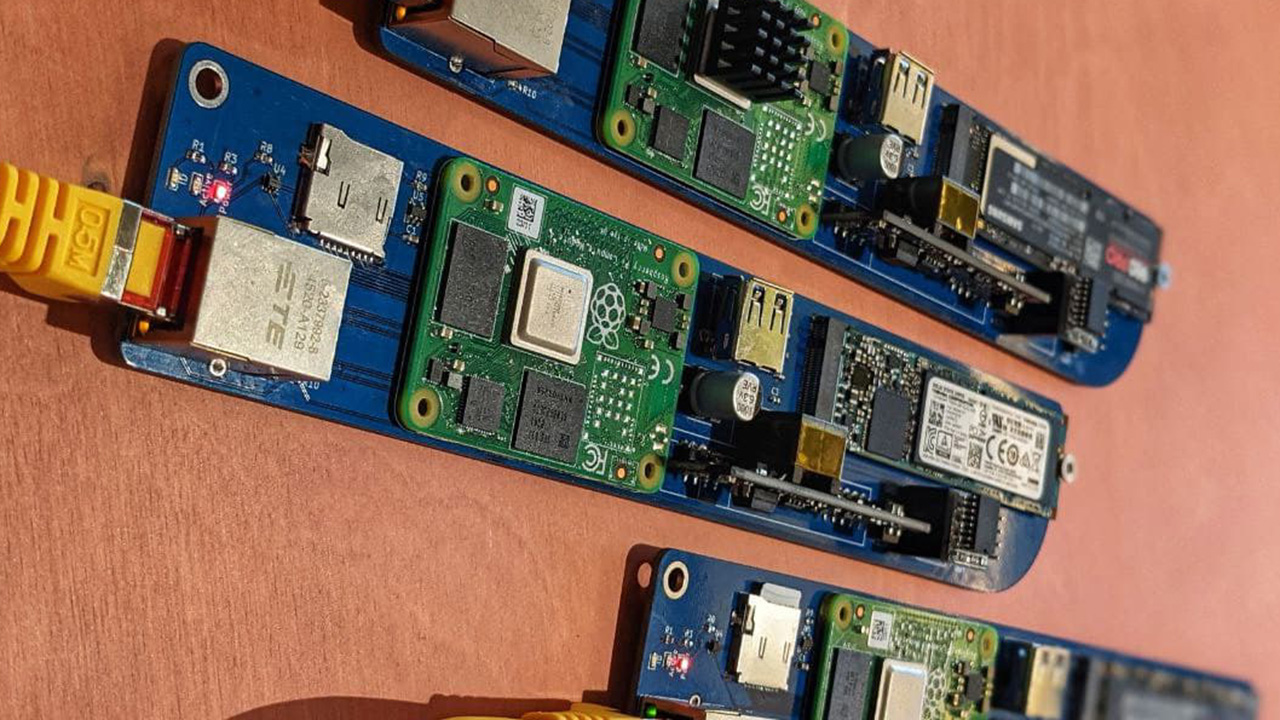Raspberry Pi Powered Blade Server Is a Cut Above the Rest
Slices of Raspberry Pi
If it’s a space issue that’s stopping you from installing multiple server blades in your home, then this may be a solution. Created by systems engineer Ivan Kuleshov, this tiny server blade is a custom carrier board for the Raspberry Pi Compute Module 4 at its heart, along with an M.2 SSD, and draws just 22W from its Power over Ethernet connection.
Compute Blade development halfway, it's time to sum up some of the results. Easier to do this in the picture.Important changes in v0.6:- TPM 2.0 chip- Port for @zymbit ZYMKEY4i - USB-A for YubiKey- Power supply up to 22W- NVMe 22110Thanks for your support!#raspberrypi pic.twitter.com/A3zx8L46gCJune 23, 2021
Kuleshov's Compute Blade is currently at the prototype stage and there are likely to be many refinements and iterations as the project progresses. As it stands the Compute Blade is small enough that a full rack measures just 19 inches, and a half-rack 10 inches. There's also a table stand in the works, that can carry four of the blades. The full rack can contain 22 of the carrier boards, for a theoretical maximum of 167GB of RAM and 167TB of storage depending on the configuration of your Compute Module 4. Not that there is a limit on storage, thanks to M.2 NVMe support (from 2230 to 22110).



Other features include support for Yubikey two-factor authentication via a USB-A port, Zymkey security modules, Microsoft’s TPM 2.0, and individual fans on the backplate. It retains the Pi’s micro SD card interface, and an HDMI output for debugging, USB-C for access to the Compute Module 4’s on-board flash and bootloader updates. Gigabit Ethernet is a given for a device such as this. Powering the Compute Blade is possible via the onboard PoE+ which provides up to 22W of power for the Compute Module 4 and NVMe drive.
Kuleshov says the next version, 0.6, will have a redesigned power system to allow for overclocking the Compute Module 4, along with ‘completely new features’. The enclosures are to be 3D-printed and each slot in the enclosure can contain a Compute Blade along with a heatsink to cool the Compute Module 4.
The engineer has previous in this area, having created a rack of 12 Raspberry Pi 4s, each attached to a Samsung T5 USB SSD. The 3D printing plans for this rack are available from his website. For more pictures of Kuleshov's work, check out his Instagram.
Get Tom's Hardware's best news and in-depth reviews, straight to your inbox.

Ian Evenden is a UK-based news writer for Tom’s Hardware US. He’ll write about anything, but stories about Raspberry Pi and DIY robots seem to find their way to him.
-
Merocle Thanks for publishing!Reply
in fact, the real consumption of such a blade is about 6-7 watts. The margin is needed for peak operating frequencies -
Kradenko ReplyMerocle said:Thanks for publishing!
in fact, the real consumption of such a blade is about 6-7 watts. The margin is needed for peak operating frequencies
Hi Meocle,
Awesome idea. Any idea if or when it will be available for purchase? Looking to build a low cost cluster and this is ideal!
Regards,
K. -
NickAnderegg ReplyThe full rack can contain 22 of the carrier boards, for a theoretical maximum of 167GB of RAM and 167TB of storage depending on the configuration of your Compute Module 4.
I do believe there’s a bit of a typo here. I think that would be 176GB of RAM, and up to 704GB of storage, unless there are now compute modules offering 8TB of eMMC. :)